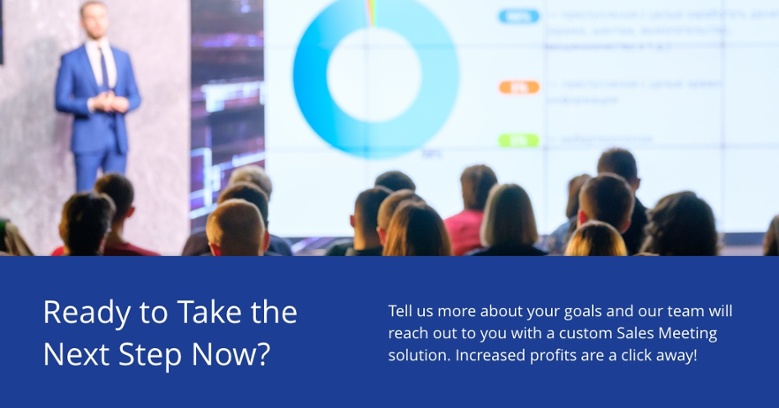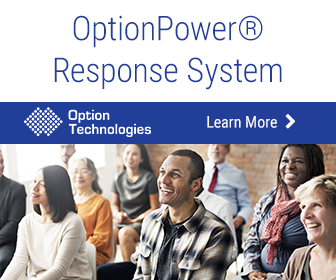Rookie mistakes can ruin a great conference - and even seasoned pros occasionally make rookie mistakes. So whether you’re new to organizing conferences or have been doing it for years, here’s a helpful guide to using best practices and avoiding common pitfalls in audience polling.
Step 1: Do a Bit of Background Research
Good audience polling begins with understanding the audience in question. Who are they? What are their needs? What are their goals, and how do these goals coincide and conflict with the goals of the presenters?
An audience of newly-hired sales reps is very different from an audience of concerned community activists. Each should be approached and polled differently.
Step 2: Set a Conference Goal
Work with the organization to set a goal for the conference. Decide what success would look like. Vague goals will lead to frustration. The more specific you are, the more easily you can measure your level of success.
Instead of: “Our goal is to educate employees about the health care plan.”
Try something like: “Our goal is to improve employees’ understanding of our new health care plan by 85%, based on feedback from polls and self-assessments.”
Step 3: Develop Questions
Now it’s time to create the questions your speaker will use to solicit audience feedback. Here are a few pointers for question development:
- Use short, simple language.
- Make it clear whether it’s a yes/no, multiple choice, or open-ended question.
- Prepare multi-lingual questions if language could be a barrier.
- Envision how the responses will look to the audience (charts, graphs, etc.)
- Don’t overload the presentation with too many polls.
In general, an audience can tackle 1 to 3 questions over the course of a 1 or 2 hour presentation. Asking 5 more questions during that period might overload them and distract from your conference message.
Step 4: Ensure Tech Support is On Point
Create a checklist of hardware, software, and staffing needs for the tech side of your presentation. Get Wifi passcodes. Work with your tech support staff to ensure you not only have a plan, but also a backup plan in case of technical issues.
Decide how your tech will integrate into your presentation. Can the polling tool handle audience registration, real-time response tracking, and preparing post-show reports? What are the minimum system requirements for people using personal laptops, ipads, or mobile devices? Settle all of these issues well before your presentation date arrives.
Step 5: Brush Up on Your Branding
As you develop your presentation and tech solutions, make sure everything is branded correctly along the way. This ensures your presentation comes across as professional and trustworthy.
Make sure the entire presentation has your company’s logo on every slide/video. Create custom URLs and QR codes for poll voting. Provide branded contact info for your attendees to use after the presentation.
Step 6: Set the Stage for Maximum Participation
It’s natural for some attendees to be a little uncomfortable with, or outright skeptical about, audience response polling. During your conference introduction, ease their worries by hitting a few key points:
- It’s anonymous
- It can be used from their personal device (if applicable)
- When it’s time for a poll, the presenter will provide clear instructions
- They’ll be able to share instant feedback for fast responses from the presenter
- Honesty is welcome
- They’ll see charts and graphs with audience totals
- It’s going to be fun and interesting
If possible, ask your company CEO or top executive to stop by and show support for the polling system. With this kind of personal connection, people will feel more comfortable with the format and understand that the company relies on them for honest feedback.
Step 7: Test Before Going Live
Before the conference begins, set everything up and run a system test that mimics the actual event as closely as possible. Note any issues and work closely with tech staff to resolve them.
Some conference planners even do a dry run poll during the actual conference, using a silly or pop-culture quiz question. This helps attendees get comfortable with the setup and encourages them to ask for help before the real questions start.
During the polling portion of the conference, keep the atmosphere upbeat and reassure people that you’ll address all of their responses as quickly as possible. Show their feedback on the big screen and provide immediate context to help them make sense of everything.
Step 8: Take it Beyond the Conference
After taking polls at a conference, many people express curiosity about what will happen next. What does the company plan to do with their feedback? Will there be follow-up polls? What if they have feedback about the conference/poll itself?
Provide a way to keep people looped in to the process: a website, email address, or person to contact. This ensures that every poll and conference you create will be a positive, enlightening experience.
Ready to add polling to your upcoming conference? OptionPower, the polling tool from Option Technologies, is a robust real-time audience response solution.



